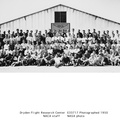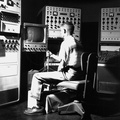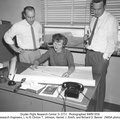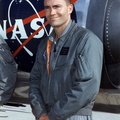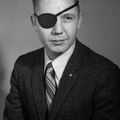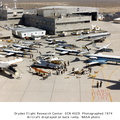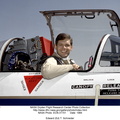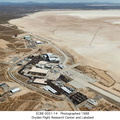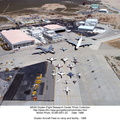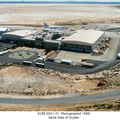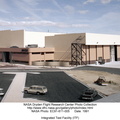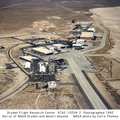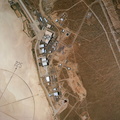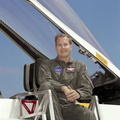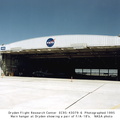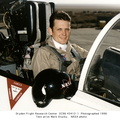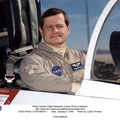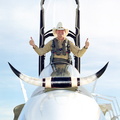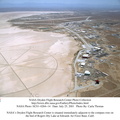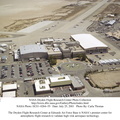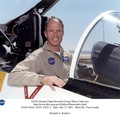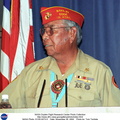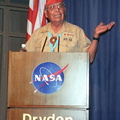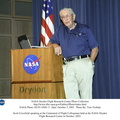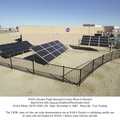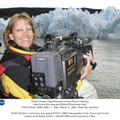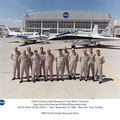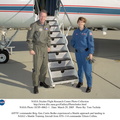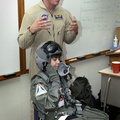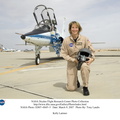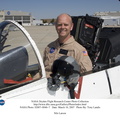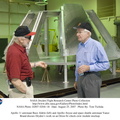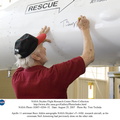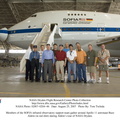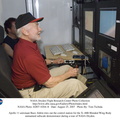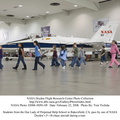
WIKIARCHIVES.SPACE
The Human Spaceflight Archive

The mural was created to celebrate the achievements of Wilbur and Orville Wright and to commemorate a century of powered flight. Central to the composition is the 1903 Wright Flyer.
Information
- Taken in
- Edwards Air Force Base
- Author
- NASA
- Description
-
The mural was created to celebrate the achievements of Wilbur and Orville Wright and to commemorate a century of powered flight. Central to the composition is the 1903 Wright Flyer.
"On Dec. 17, 1903, the Wright brothers inaugurated the aerial age with their successful first flights of a heavier-than-air flying machine at Kitty Hawk, N.C. This airplane, known as the Wright Flyer, sometimes referred to as the Kitty Hawk Flyer, was the product of a sophisticated four-year program of research and development conducted by Wilbur and Orville Wright beginning in 1899. During the Wrights' design and construction of their experimental aircraft, they also pioneered many of the basic tenets and techniques of modern aeronautical engineering, such as the use of a wind tunnel and flight testing as design tools. Their seminal accomplishment encompassed not only the breakthrough first flight of an airplane, but also the equally important achievement of establishing the foundation of aeronautical engineering."
Dr. Peter Jakab,
Curator of Aviation,
National Air and Space Museum, Smithsonian Institution
"Celebrating One Hundred Years of Powered Flight, 1903-2003", documents many significant achievements in aeronautics and space flight from the dawn of powered flight to the present.
Historic aircraft and spacecraft serve as the backdrop, highlighting six figures representing the human element that made these milestones possible. These figures stand, symbolically supported by the words of Wilbur Wright,
"It is my belief that flight is possible…"
The quote was taken from a letter written to his father on September 3rd, 1900, announcing Wilbur's intention to make "some experiments with a flying machine" at Kitty Hawk, North Carolina.
"This year, Bob is helping us commemorate the Centennial of Flight with a beautiful mural slated for placement in our Dryden Flight Research Center that documents the history of flight from the Wright Flyer to the International Space Station. We should all take note, I think, that in the grand scheme of things, one hundred years is a very short period of time. In that blink of an eye we've gone from Kitty Hawk to Tranquility Base and now look forward to our rovers traversing the surface of Mars. Despite the challenges we face, the future we envision, like the future depicted in the artwork of Bob McCall, is a future of boundless possibility. "
NASA Administrator Sean O'Keefe
April 10, 2003
Title: "Celebrating One Hundred Years of Powered Flight 1903-2003"
Artist: Dr. Robert T. McCall 2003
Medium: oil on canvas
Dimensions: 6 feet by 18 feet
Commissioned by: NASA Dryden Flight Research Center, Edwards California
- Created on
- Thursday 5 June 2003
- Albums
- US SPACE PROGRAM / FACILITIES / DRYDEN/ARMSTRONG CENTER
- Source link
- https://www.dfrc.nasa.gov/Gallery/Photo/index.html
- Visits
- 33
- Rating score
- no rate
- Rate this photo
- License
- Public Domain
- Modified by WikiArchives
- No (original)
- Downloads
- 2
Powered by Piwigo




























